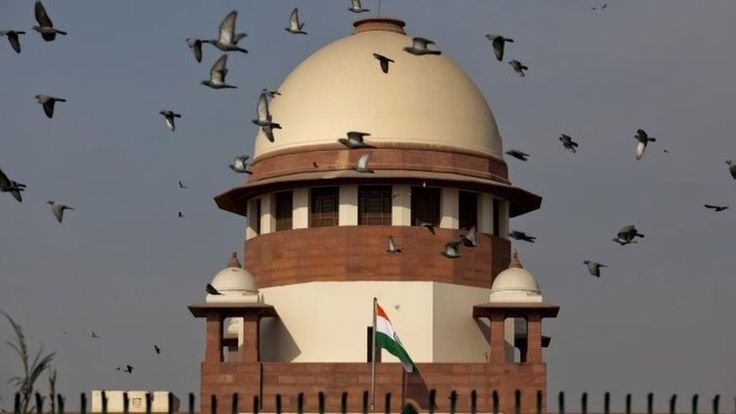The Evolution of Criminal Justice Systems in India: From Ancient Codes to Modern Reforms

-Ananya Sinha
The criminal justice system of India has seen a prolonged and multifaceted development, which has been shaped by ancient traditions, colonial codification, and modern reforms. Every stage of its evolution is a reflection of transformations in governance, legal principles, and social priorities. The present article discusses the historical background, broad changes, and recent reforms of India’s criminal justice system to present an integrated and analytical perspective of its development.
- Ancient and Medieval Foundations
The roots of criminal justice in India are found in ancient Hindu scriptures and philosophical tenets. Treatises such as the Manusmriti and Arthashastra established early codes of conduct, justice, and penalty. The Arthashastra, written by Kautilya in about 300 BCE, described a strongly hierarchical system with emphasis on state control, spying, and evidence-based adjudication. Justice in this period was administered by kings with the assistance of councils and village assemblies.
In the medieval times, especially under the Delhi Sultanate and subsequently the Mughal Empire, Islamic law was the central theme. Justice was administered by qazis and faujdars based on Sharia law. Though there was some legal pluralism where local Hindu tradition and practice tended to coexist along with Islamic principles, the system, for all its hierarchical structure, had no uniformity, and punishments tended to vary on grounds of religion, class, or power.
- Colonial Codification and Reorganization
The most radical change was during the British period. The East India Company initially maintained local traditions but soon introduced codified law to create administrative uniformity and central authority. The watershed events were the creation of the Supreme Court at Calcutta (1774) and later the High Courts in the Presidency towns.
A number of codes of law were enacted that are still the basis even now. The Indian Penal Code (IPC) was established in 1860, which was a uniform list of crimes and punishments. It was followed by the Criminal Procedure Code (CrPC) in 1861 and the Indian Evidence Act in 1872. They eliminated uncertainties of customary practices and established a common law framework in British India.
Colonial powers also brought the Indian Police Act of 1861, which created a centralized and uniform police apparatus primarily oriented towards keeping order and quelling unrest. Though these regulations brought about structural efficiency, they were initiated more with the intention of fulfilling colonial objectives than addressing human rights or the availability of justice for the ordinary citizen.
- Post-Independence Transformation
Since independence in 1947, India has maintained the essence of its colonial legal system but over time adapted it to develop democratic and constitutional principles. The Indian Constitution of 1950 incorporated ideals such as equality before the law (Article 14), protection from arbitrary arrest (Article 22), and right to life and personal liberty (Article 21).
The first few decades following independence witnessed a number of significant legislative amendments. The CrPC (1955 Amendment) brought in reforms under bail provisions, expanding the accused’s rights. The 1986 Juvenile Justice Act created a distinct legal regime for children in conflict with the law. Other notable legislation such as the Narcotic Drugs and Psychotropic Substances (NDPS) Act, 1985, and Prevention of Corruption Act, 1988, responded to new patterns of crime in an industrializing nation.
However, delays in trials, overcrowded prisons, and limited access to legal aid exposed systemic weaknesses. These issues led to growing calls for procedural reform and judicial modernization in the late 20th century.
- The Era of Reforms: 1990s–2010s
One of the greatest legal changes in recent decades was the reaction to gender violence. The Delhi gang rape case of 2012 stunned the nation and triggered mass protests, leading to decisive legislative action. The Criminal Law (Amendment) Act, 2013—the Nirbhaya Act—strengthened punishments and broadened definitions of rape, as well as added new types of sexual offenses such as stalking and voyeurism.
Early 2000s saw amendments to the CrPC and the Indian Evidence Act, which brought in procedural protection and updated investigation techniques. A notable one was making electronic records admissible as evidence and strengthening medical examination procedures for rape survivors.
In 2015, the Juvenile Justice Act was amended to enable juveniles aged between 16–18 years to be tried as adults for serious crimes, a step aimed at filling the gap regarding increasing juvenile participation in serious offenses. The Act also established structures for child welfare and adoption.
The Gram Nyayalayas Act, 2008, sought to enhance access to justice at the grassroots level by setting up local courts to provide quick and affordable justice in the rural landscape. Although it was a laudable effort, the realization of Gram Nyayalayas has been limited owing to infrastructural and logistical constraints.
- The 2023–24 Legal Overhaul: A Break from Colonial Legacy
A watershed occasion in Indian criminal justice history in 2023 was when three new acts were passed with the objective of substituting colonial-era laws:
- Bharatiya Nyaya Sanhita (BNS), 2023 – to supersede the Indian Penal Code
- Bharatiya Nagarik Suraksha Sanhita (BNSS), 2023 – to supersede the Criminal Procedure Code
- Bharatiya Sakshya Adhiniyam (BSA), 2023 – to supersede the Indian Evidence Act
These laws, effective from July 1, 2024, were drafted to do away with colonial-era terminology, add contemporary offenses like cybercrime and organized crime, and facilitate quicker and victim-focused justice delivery.
The BNS keeps major offenses such as murder and rape but also adds community service for minor offenses as well as clearly defining terrorism, mob lynching, and environmental crimes. Of special note, the sedition law of the colonial era was repealed, though provisions to punish threats to national integrity were retained.
The BNSS prioritizes speedy justice through time constraints in investigation and trial procedures, the use of forensic science, and video recording of search and seizure operations. It also allows in-absentia trials for absconding accused in serious cases, so that justice is not withheld for procedural lapses.
The BSA streamlines evidentiary requirements by specifically acknowledging electronic and digital records, an urgent amendment for a more digitized world.
- Focus on Forensics and Institutional Upgrading
Current reforms have put considerable emphasis on building forensic capacity. The creation of the National Forensic Sciences University (NFSU) and the strengthening of Central Forensic Science Laboratories (CFSLs) seek to upgrade investigation quality and minimize dependence on confessions or witness evidence, which are prone to unreliability.
India also aims to train more than 30,000 forensic scientists every year, an indicator of an emphasis on evidence-based science. This step is bound to not just hasten the trials but also raise conviction rates by boosting the quality of evidence.
Digitization of court records, introduction of virtual hearings (particularly after COVID-19), and the e-Courts project are major steps towards building a more transparent and efficient judiciary.
Further, the development of India’s criminal justice system—from traditional moral codes and religious precepts to a codified colonial system and now to a reformed, digitalized framework—mirrors the country’s journey toward equality, inclusivity, and efficiency in policing and delivery of justice.
Although substantial strides have been taken, delays, undertrial numbers, levels of legal aid, and gaps in enforcement continue to exist. Still, the 2023 reforms represent a visionary and ambitious initiative toward a system that is not merely modern and streamlined but also grounded in constitutional principles and a diverse, democratic society’s needs.


